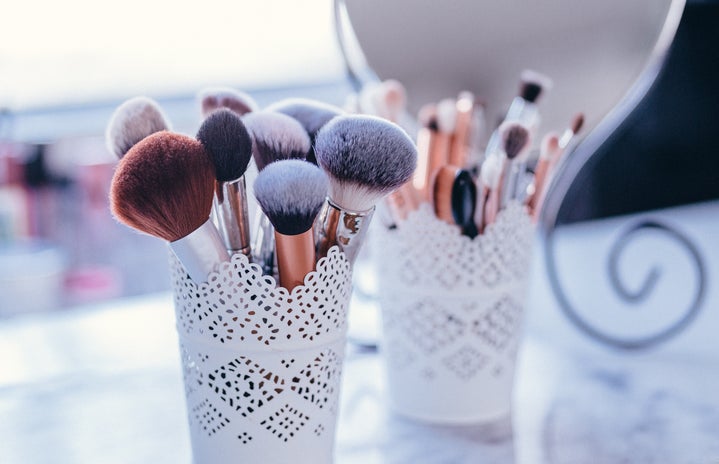The average woman spends about $15,000 on makeup in her lifetime, according to the financial website Mint.com.
The global beauty industry has morphed into an expansive behemoth that has hungrily devoured new markets around the world; with its tentacles reaching into markets from perfumes to hair care to skin care, makeup is one of the smaller contributors to the industry with a market worth of a mere $18 billion. The industry as a whole is reported to still be growing at a rate of 7 percent a year, which according to The Economist, is “more than twice the rate of the developed world’s GDP.”
Translation? People are spending more money on stuff they put on their faces than an entire country is producing in a given year.
Let me preface this by saying that I think makeup is awesome. This is not an article meant to shame those who have an extensive collection of highlighters, eyeshadows, and bronzers. However, as consumers of products that are manufactured at such prodigious levels all over the world, I believe it is our duty to remain informed on where these products actually come from and what damages they leave in their wake.
This is mica.
Mica is one of the most common ingredients found in makeup, and it’s likely responsible for that coveted shimmering highlight that only the Jedi masters of makeup have conquered. About 60 percent of the world’s mica comes from India, where all too often the main source of hard labor in these mines is children.
Children as young as five years old have been employed in these illegal mines, which account for nearly 70 percent of India’s mica export. In India, it is illegal for children under the age of 18 to be employed as workers in hazardous industries. However, due to the severe poverty that runs rampant throughout the country, children are often put to work to support their families out of economic necessity. Reuters, an international news agency, estimated that approximately 20,000 children are involved with the illegal mining of mica.
Children are not the only ones victimized by these mines and employment practices. Women and men are also exploited for their labor and compensated extremely poorly for their efforts.
In 1980, mica mines were deregulated as a result of stricter deforestation policies. However, with the spike in interest and commerce in mica, many prospectors returned to abandoned mines and began establishing their underground businesses as they continued to export mica illegally. The government in India has been slow to act on enforcing laws prohibiting the activity and labor demographics that these mines utilize.
This is largely due to the economic stimulation brought by the mica’s export, creating a double-edged sword in terms of remedying the situation. However, although many human rights abuses have been inflicted as a result of illegal mining activities, the reality is that mica mining has provided a way for families to keep themselves from starving to death. Indian government officials launched an investigation of these mines in August of last year as a result of reported deaths of children from cavern collapses, and efforts to eradicate child labor have begun to take up new vigor as NGOs and advocacy groups have taken up the call to action.
What does this mean for you as a consumer?
Well, for starters, research, research, research! Most major cosmetic companies have regulatory branches dedicated to vetting their product sources — some are better than others, and with the availability of information on the web, it has become increasingly difficult for most companies to remain non-transparent. With this particular issue, the system of illegal mining has been purposely designed to be archaic and therefore inherently difficult to trace. Most of the miners have no idea where the mica they mine will go or what it will be used for, and companies can source their materials from illegal mines indirectly through sellers who consolidate materials from different areas before sending their product away to the West.
There are countless resources online that promote ethical makeup brands, and most are no more expensive than the brands you are used to purchasing. In today’s market of convenience buying and online shopping, it is easy to distance ourselves from the source of the products we purchase, and this holds true for all industries whether you’re talking about cosmetics, food, or clothing. Even though you may live in the United States, you can still make an impact in places like India by supporting brands that hold their workers’ rights in higher regard than their profit margins.


